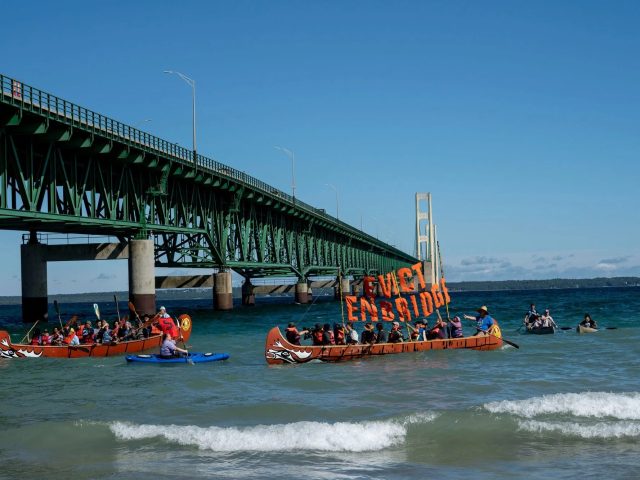Threats to the Great Lakes

The Great Lakes contain one-fifth of the world’s freshwater, yet they face multiple challenges. Legislation like the Clean Water Act and the Great Lakes Compact help to protect and manage these water bodies to ensure that they remain a quality water source for the communities that rely on them for drinking water and recreation. However, the Great Lakes are still threatened by plastic pollution, invasive species, oil spills, climate change, and other risks that endanger the wildlife habitat and water quality of this important region.
Invasive species such as zebra mussels and quagga mussels threaten the ecosystems of the Great Lakes as they outcompete native filter-feeding species. Asian carp are currently being kept out of the Great Lakes by barrier systems, but they have the potential to decimate the spawning grounds of many native fish species if they circumvent these barriers.
Microplastics are plastic particles under 5 millimeters in size that can be manufactured or formed from the degradation of larger plastics or as fibers from clothing. Ninety percent of water samples taken from the Great Lakes over the past ten years are contaminated with microplastics at levels that are unsafe for wildlife.
Line 5 pipeline transports up to 23 million gallons of crude oil and gas each day under the Straits of Mackinac. The pipeline has leaked over 1.1 million gallons of oil over its lifespan, polluting important watersheds and surrounding communities. Today, it is operating 20 years past its engineered lifespan, risking malfunction due to corrosion and pressure. Line 5 poses an unacceptable risk of an oil spill in sensitive ecosystems of the Great Lakes.
The West Valley Nuclear Waste Facility stores nuclear waste near the Great Lakes. It was constructed prior to federal and state environmental laws on loose glacial till with steep slopes that are prone to severe erosion after saturating rains. These rains are becoming more frequent due to climate change, increasing the risk of nuclear contamination of the Great Lakes.
Increasing temperatures from climate change have caused the ice coverage of the Great Lakes to drop by 5% each decade. At the start of the new year, the Great Lakes were virtually ice-free with their lowest ice coverage in the last 50 years. The ice serves as a protective barrier for fish eggs and young fish. Many fish species will be at risk if these trends of reduced ice coverage continue.
For more information, read the full article here: https://www.buffalorising.com/2024/01/threats-to-the-great-lakes/.
